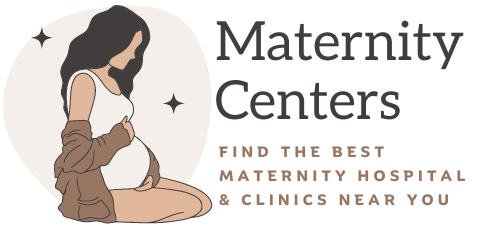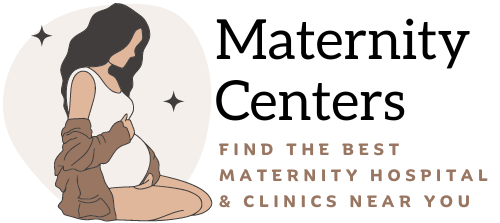Currently Empty: $0.00
What is The Impact of Digital Technology in Maternity Care
Maternity care is a crucial aspect of healthcare that focuses on the well-being of pregnant women, the safe delivery of babies, and the postpartum period. It encompasses a wide range of medical, emotional, and social support services designed to ensure a healthy pregnancy and a positive birth experience. This article delves into the diverse and essential uses of technology in maternity wards, labor and delivery units, and prenatal care, aiming to highlight the profound impact of these innovations on maternal health and fetal well-being.
Contents
What is the Importance of Technology in Maternity Care?
The importance of technology in maternity care cannot be overstated, as it has revolutionized the way expectant mothers receive healthcare and support throughout their pregnancy journey. In an era characterized by rapid technological advancements, the integration of digital tools, medical devices, and telehealth solutions into maternity care has brought in a new era of personalized, accessible, and effective healthcare for pregnant women.
This transformation extends from prenatal monitoring and diagnostic capabilities to enhancing patient education and engagement, ultimately aiming to optimize maternal and fetal health outcomes. In this era of digital innovation, the importance of technology in maternity care lies in its capacity to improve the quality of care, early detection of potential issues, and the provision of invaluable resources and information to expectant mothers, all of which contribute to a safer and more empowering pregnancy experience.
Improved Diagnostics:
Timely diagnosis is a critical cornerstone in the realm of maternity care, as it can significantly influence the trajectory of a woman’s pregnancy and her overall well-being. The implementation of diagnostic tools such as blood tests, medical imaging, and electronic health records (EHRs) plays a pivotal role in identifying and managing various maternal health conditions. These tools empower healthcare providers to detect issues such as gestational diabetes, hypertension, and preeclampsia at their earliest stages, allowing for swift and informed interventions.
Data Analysis and Predictive Medicine:
Technology, particularly artificial intelligence (AI) and machine learning, can analyze large datasets to identify patterns and trends in maternal health. These models are designed to detect early warning signs and risk factors that could lead to complications during pregnancy.
By continuously monitoring and analyzing patient data, AI-driven systems can provide healthcare professionals with timely alerts and risk assessments. This proactive approach empowers medical teams to intervene swiftly, implementing personalized care plans tailored to the specific needs of each expectant mother.
For example, if AI identifies a pattern suggesting a higher risk of gestational diabetes, it can prompt healthcare providers to initiate dietary adjustments, lifestyle modifications, or more frequent monitoring. In cases of hypertension or preeclampsia risk, predictive modeling can trigger closer monitoring of blood pressure and other vital signs, potentially preventing serious complications.
Mobile Apps and Wearable Devices:
Pregnancy-related mobile apps and wearable health technology empower women to actively participate in their care. These tools offer educational resources, appointment reminders, symptom tracking, and real-time monitoring of vital signs.
Improved Communication:
Technology facilitates communication and collaboration among healthcare providers, ensuring that critical information is shared promptly. This is essential in emergencies or complex cases involving multiple specialists.
Patient Engagement and Education:
The internet and mobile apps provide pregnant women with a wealth of information, enabling them to better understand their pregnancies and make informed decisions about their care. However, it’s important to ensure that the information is accurate and trustworthy.
Global Health Initiatives:
Technology plays a pivotal role in global efforts to improve maternal health. Technology-driven global health initiatives have the potential to bridge disparities in maternal health by tracking disease outbreaks, promoting vaccination campaigns, disseminating crucial information, and offering remote healthcare services to underserved populations. This collective effort contributes to safer pregnancies, reduced maternal mortality rates, and improved maternal and child health on a global scale.
What are the Uses of Technology for Pregnancy in Hospitals?
Technology plays a vital role in pregnancy care within hospital settings, enhancing patient monitoring, diagnosis, treatment, and overall patient experience. Here are several key uses of technology in pregnancy care at hospitals:
Ultrasound Imaging:
Hospitals employ ultrasound technology as an indispensable tool in prenatal care, allowing healthcare providers to gain critical insights into the progression of pregnancy. Through ultrasound examinations, medical professionals can not only visualize the developing fetus but also closely monitor its growth, assess its positioning within the womb, and pinpoint any potential abnormalities.
These examinations are performed using state-of-the-art ultrasound machines, which have evolved to offer advanced features such as 3D and 4D imaging. These technologies provide remarkably detailed images and even real-time videos of the developing fetus, granting both healthcare providers and expectant parents a more comprehensive view of the baby’s physical features and movements.
In the case of 3D ultrasounds, multiple two-dimensional images are combined to generate three-dimensional representations of the fetus. This can be particularly useful for identifying certain structural anomalies and offering a clearer perspective of the baby’s facial features and limbs.
Meanwhile, 4D ultrasounds take it a step further by providing real-time video footage, allowing parents to witness their baby’s movements, expressions, and interactions within the womb. This technology not only enhances the bonding experience between parents and their unborn child but also aids healthcare providers in assessing fetal well-being and development.
Fetal Monitoring:
Fetal Monitoring (EFM) is a vital medical technology utilized during pregnancy and labor to continuously monitor the well-being of both the fetus and the mother. Electronic Fetal Monitoring devices provide real-time information on the baby’s heart rate and the mother’s uterine contractions, offering critical insights into the progress of labor.
This monitoring is pivotal for the early detection of any signs of fetal distress, oxygen deprivation, or complications, enabling healthcare providers to make timely interventions to ensure a safe and successful childbirth. Electronic Fetal Monitoring’s primary components are transducers, including one placed on the mother’s abdomen to measure uterine contractions and another to record the fetal heart rate, providing a comprehensive picture of the labor process and the baby’s condition.
Labor and Delivery Technology:
Hospitals are equipped with advanced medical equipment for labor and delivery, including specialized beds, anesthesia machines, neonatal resuscitation equipment, and surgical instruments for cesarean sections.
Operating Room Technology:
In situations where complications or urgent medical interventions are necessary, hospitals rely on cutting-edge technology within their operating rooms. These advanced technologies and techniques are employed for a range of procedures, including but not limited to cesarean sections (C-sections), hysterectomies, and the surgical repair of birth-related injuries, often referred to as birth trauma. This technology encompasses a wide array of medical tools, equipment, and systems designed to ensure the highest level of precision, safety, and effectiveness during surgical procedures. These advancements have significantly improved patient outcomes and recovery rates, making modern operating rooms vital hubs of medical innovation and patient care.
Neonatal Intensive Care Units (NICUs):
Hospitals equipped with Neonatal Intensive Care Units NICUs use advanced technology, including incubators, ventilators, and monitoring devices, to provide specialized care to premature or critically ill newborns.
Laboratory Testing:
Hospitals conduct essential laboratory tests using technology, such as blood tests, urine analysis, and genetic testing, to monitor the health of both the mother and baby. Timely identification of any abnormalities or imbalances allows for prompt intervention and the development of tailored treatment plans.
Breastfeeding Support Technology:
Hospitals utilize technology to provide breastfeeding support to new mothers. This includes lactation consultants who use breast pumps and digital tools to assess milk supply and assist with breastfeeding techniques. Additionally, some hospitals employ smartphone apps and wearable devices to help mothers track feeding schedules and monitor their baby’s growth and development. These technological aids promote successful breastfeeding and postpartum care.
Patient Monitoring Systems:
Continuous patient monitoring systems in hospitals track maternal vital signs, fetal heart rate, and uterine contractions during labor. These systems offer constant vigilance, promptly detecting any deviations from normal parameters and immediately alerting healthcare providers. This real-time information is invaluable in ensuring the timely intervention and appropriate care of both the expectant mother and the baby, contributing to safer and healthier childbirth experiences.
What are the Uses of Technology for Pregnancy At Home?
Pregnancy Tracking Apps:
Mobile apps designed for pregnancy tracking provide detailed information about fetal development, changes in the mother’s body, and important milestones. They also offer symptom tracking, due date calculators, and appointment reminders, helping expectant mothers stay informed and organized throughout their pregnancy.
Wearable Health Devices:
Wearable devices like smartwatches and fitness trackers can monitor maternal health by tracking metrics such as heart rate, sleep quality, and activity levels. Some models offer specific pregnancy tracking features, promoting a healthier lifestyle during pregnancy and ensuring expectant mothers are getting adequate exercise and rest.
Fetal Dopplers:
Imagine being able to share those precious moments when you connect with your baby, long before the first kicks are felt or the ultrasound images are seen. Fetal dopplers offer exactly that. With just a few simple steps, a pregnant woman can place the doppler’s probe on her abdomen, and within seconds, the rhythmic thumping of her baby’s heart fills the room.
It’s a powerful and emotional experience that can bring tears of joy and relief to any mother’s eyes. Fetal doppler devices enable pregnant women to listen to their baby’s heartbeat at home. These handheld devices provide a sense of reassurance between prenatal appointments and can be especially comforting for mothers concerned about their baby’s well-being.
Online Prenatal Classes:
The virtual resources empower expectant parents to access education conveniently from home, helping them prepare for the arrival of their baby. Online prenatal classes and webinars cover a wide range of topics, from childbirth preparation to newborn care.
Home Blood Pressure Monitors:
Women with hypertension or gestational hypertension can use home blood pressure monitors to monitor their blood pressure regularly. This data assists healthcare providers in assessing and adjusting treatment plans, enhancing the management of maternal health.
Pregnancy Blogs and Forums:
Online pregnancy communities and blogs provide a supportive platform for sharing experiences, seeking advice, and connecting with other expectant mothers. These virtual spaces can be informative, emotionally comforting, and reassuring during pregnancy.
Nutrition and Exercise Apps:
Nutrition and exercise apps tailored to pregnancy offer guidance on maintaining a healthy diet and engaging in safe physical activity during gestation. They provide nutritional recommendations and exercise routines suitable for expectant mothers, promoting overall well-being.
Telehealth Services:
Telehealth platforms allow expectant mothers to have remote consultations with healthcare providers. This technology offers convenience, reduces the need for in-person visits, and enables discussions about pregnancy-related concerns, ensuring continuous prenatal care.
Conclusion
The adoption of digital technology in maternity care empowers pregnant women through mobile apps, wearables, and telemedicine, promoting engagement and informed decision-making. It enhances communication among healthcare providers, ensuring timely interventions in complex cases. Digital tech modernizes and optimizes maternal health services, improving data management, safety, patient empowerment, and global maternal health challenges. Embracing digital advancements delivers safer, personalized, and patient-centric healthcare for expectant mothers and newborns.














